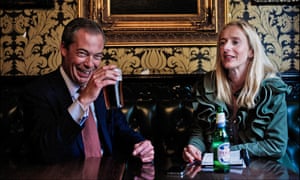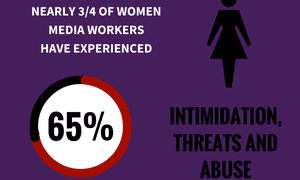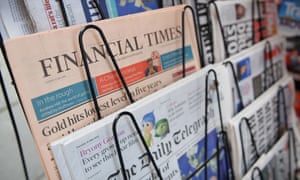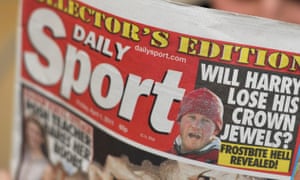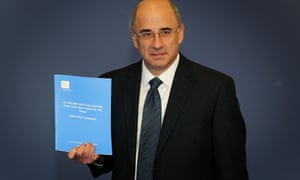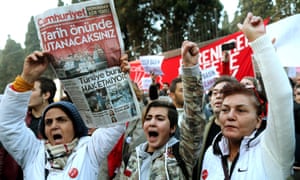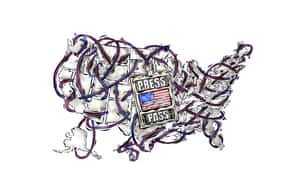
Six days after the presidential election, veteran reporter and anchor of PBS News Hour Gwen Ifill died at the age of 61. One of the greats in her industry, Ifill thrived on complexity and research rather than the sound of her own voice. During presidential election cycles, she focused on issues in voters’ lives rather than on the race to name a winner.
While accepting an award from the National Press Foundation in 2007, Ifill said she was often asked to defend her profession. “Journalism is about asking the questions, not assuming the answers,” Ifill told the crowd.
Assuming the answers is precisely what most news media did this election, at the country’s great peril.
Last month, in a widely read essay for the Guardian, I called out the prevailing, erroneous assumption of 2016 election coverage: that the white working class was fueling Trump’s ascendence. All year, polls had shown that income, education level and other class markers did not predict Trump support. Still, the conflation of poor whiteness with political decision-making persisted within an elite media industry perhaps __more comfortable discussing the racism of West Virginia than of Westchester, New York.
That industry now finds itself cast as public enemy by Americans across the political spectrum. Trump, Clinton and Sanders supporters criticized and accused the press all year, for different reasons – some valid, some false. And, just as trust in the news media is so weakened, a president-elect has made unprecedented threats to their freedom.
To find their center in such a sociopolitical storm, top news organizations could do less of the privileged bloviating that got them in trouble this year. They could spend __more time on facts, however inconvenient to their personal ideas – like, say, that poor whites are the moral scourge of this country.
The next big mistake to avoid: the narrative of the divided nation
Exit polls revealed that the numbers my essay cited were correct. Trump got 41% to 50% of votes – resoundingly white – at every income bracket. Among Trump voters, for every struggling white rural laborer, there was at least one comfortable white suburbanite.
Trump’s appeal has always been a white American problem, not a poor white American problem.
To show us “Trump country”, though, reporters drove rental cars into the poor hollers of Appalachia to ask poor whites why they were so angry. They set up cameras at Trump rallies to broadcast people in trucker hats screaming hateful things – an image that is endlessly palatable to some white liberals, whose guilt over both race and wealth is assuaged by a story in which they are the good ones.
What America got out of it was a skewed understanding of this country and the election of a lifetime. What CNN got out it, on the other hand, was a reported $1bn dollars in gross profits this year.
It takes two to make a message work, though, and media consumers bear responsibility. Now, on the eve of a transfer in political power, we must resist another misleading media narrative. It’s the story Trump successfully banked on: the divided nation, symbolized by a dangerous red-and-blue map.
If you’ve been watching news coverage, there’s a good chance this phrase is now bumping about in your mind: urban v rural. I have been both, and I promise you that one does not contain a people superior to or essentially different from the other. Reject this phrase.
Millions of people, members of my white, working-class Kansas family included, are heartbroken today in red states right along with New York. And millions of people in blue states voted for Trump. The clunky state map is good for gauging the electoral college at a glance, but a more accurate geopolitical rendering is one in which each state is a violet hue representing voting proportions or, even better, each county is a reddish or bluish purple. Such maps reveal that cities and countrysides, the coasts and the states between, have far more in common than we tell ourselves.
We are a divided nation in electoral votes, ideologies and self-selected social-media bubbles, there is no doubt.
On the ground, however, between human beings, is a more nuanced story. It’s a story that cannot be reduced to a red and blue map, or even a purple one.
Sometimes it involves people doing horrible things to others – an element of society magnified by news coverage for good reason. More often, it involves people trying their best. Being helpful and brave and petty in the same day. Being complicated individuals in a world bent on categorizing them: as voters, as consumer demographics, as suppliers of data and creators of content.
Step outside your whirring post-election thoughts and look another human being in the eye. The story you find there will never fit on a bumper sticker for a political campaign. It will never fit in a soundbite.
It will never be told by a mostly white, affluent coastal media, which many Americans rightly believe doesn’t speak for or to them. It will never be valued by profit-driven networks, one leader of which infamously said this year of the Trump phenomenon: “It may not be good for America, but it’s damn good for CBS.”
What’s broken about American media perhaps has less to do with a class system than with what created it: unchecked capitalism in which news is a fast product.
There isn’t some mass political conspiracy in the media. There is, however, historic wealth inequality in America, and the journalism industry reflects it like any other.
My essay speculating on these themes garnered a humbling wave of endorsements. The thousands of messages I received suggested that a diverse swath of society had reached a tipping point about class inequality. The messages were from working-class people who felt vindicated; middle- or upper-class people who broadened their perspectives; citizens of other countries who noted similar scapegoating of disenfranchised groups in the UK and beyond.
They were also from journalists saying they’d do better.
That such a varied group found something to align with in the same words confirmed what I have always believed: media consumers crave nuance.
In national media, however, fixation with an aggrieved working class never lessened. After reading my essay, some high-profile media outlets even framed my message – that the white working class was not Trump’s base – as “Trump supporters are misunderstood”. I was bearing witness to progressivism in so-called red states, but they saw me as some sort of Trump whisperer. That some interviewers insisted I speak for his voters ironically reinforced my message that entrenched narratives lead us away from the truth.
Forget about political stripes. Protect the press
Those who voted for Trump knew about the women stuff. They knew about the minorities stuff. Still, they weren’t deterred – believing, perhaps, that those caustic elements of their candidate’s personality wouldn’t affect them.
Here is something that will.
As of today, they are living under the protections of the first amendment to the constitution of the United States. Freedom of the press is a part of that amendment – one of the great markers of this democracy and a privilege people in totalitarian countries are persecuted without.
Two years ago, I spent a December evening with fellow journalists and PEN America, which protects free expression worldwide, writing holiday cards of solidarity to imprisoned journalists around the world behind held behind bars, possibly tortured and raped, for attempting to reveal corruption, genocide and other injustices that American citizens would be more vulnerable to without an unencumbered press.
Trump and the Republicans he is bringing to Washington do not care for a free press, as has been documented for the past year. The president-elect has denied credentials to those who dared to report unflattering facts; called Fox News host Megyn Kelly a bimbo after she described his misogyny; promised to dismantle free-speech laws for the purpose of filing libel suits; and named Stephen Bannon, executive chairman of extremist propagandist Breitbart News, as a senior White House strategist. He has plainly admired the government of Russia, where so many journalists have been murdered in the recent years that they hold a national day of remembrance.
Such casual malice toward the people’s watchdog endangers every American, regardless of their political stripes.
How journalists should organize and fight in such an environment is a long and uncertain discussion. What is clear is that, even if they get every story right from now to eternity, they fight a losing battle without the trust and support of the American public.
To regain that trust, a good place to start would be media literacy outreach efforts in public schools, local organizations and other community spaces. Ideally, civics education would be fully restored in the public school system, with a robust unit on media literacy. Every American should be equipped to discern news from propaganda and all the gray areas in between in the digital 21st century; understand the laws that threatened and protected Amy Goodman of Democracy Now in covering the Standing Rock protests this fall; and identify the various economic models and interests served in media.
Speaking of media literacy, it is worth noting that the coastal “media elite” were never meant to unearth stories across the middle of this country – those states ignored by presidential campaigns and therefore by the press corps that follow them. Someone else used to do that.
Local newspapers.
We must rebuild local journalism
It is no coincidence that the rise of endless cable and online sources, coupled with the economic fall of local and rural newspapers, occurred just before one of the most divisive political climates in American history.
There was a time when we all watched the same three national news networks and, locally, the same affiliate stations; we all read the same handful of national newspapers and, locally, the same city rags. One danger in that centralized information model was that a single group – college-educated white men – set the rules and told the stories.
The digital era, in which media sources are decentralized but not necessarily diversified, presents a new sort of danger. With half of us on Fox News, half of us on CNN or MSNBC, and nearly all of us on self-constructed pipelines of tweets and Facebook posts by like-minded individuals, we not only receive different information – we perceive different realities.
For much of the country, less and less of that perceptioncomes from journalists who’ve stepped foot in our own states, let alone our towns or counties. Due to the economic withering of local news outlets, most of the journalists I trained with at the turn of the millennium have been laid off or fled to industries with more stable incomes.
Much was lost in that decline, but perhaps more was gained in the opportunity we now have to rebuild local journalism in a way that not only rectifies geographical imbalances but includes voices from previously unrepresented communities; harnesses technology to engage and include previously passive readers; and makes the stories of previously isolated people available not just to themselves but to the world.
Journalists across the country, myself included, are working on doing just that. In my region, see This Land Press, The New Territory and Fly Over Media, all of which were founded in recent years by mid-career midwesterners for doing in-depth, investigative, multimedia and even literary work about the American heartland.
The places they cover contain stories and lessons relevant to the entire country. Few would have been better equipped to handle Trump’s media manipulations, for example, than a Kansas journalist.
That’s because, for decades, the hate-mongering, nationally infamous Westboro Baptist clan has resided in Topeka, the state capital. They frequently fan across the state with protest signs reading “God hates fags”. One of the first lessons I learned as a budding Kansas reporter was how to both dutifully report the news and not be used as a puppet.
Westboro receives coverage in Kansas outlets when warranted, but by and large their sidewalk show ceased to be newsworthy when it became a strategy to play the news media for free airtime.
This unwritten, situational code among Kansas journalists – who could instead sell papers and increase ratings by placing Westboro’s horrific stunts front and center – is one of the most dignified, human approaches to journalism I’ve ever had the honor of sharing. It is the opposite of a multibillion-dollar cable TV empire’s reveling in Trump’s rise.
You are part of the solution: the media consumer’s role
Media consumers might consider turning off those news sources that have proved themselves both easily manipulated and compromised by their own ideologies.
Trump knew the most powerful journalists would have a blind spot, whether willful or subconscious, to his supporters in their own economic class. His media mastery is such that he might create a TV network under the Trump brand, a veritable state television station with a profit-based mission.
Trump’s cynical media vision might have a blind spot itself. A ruthless businessman perhaps wouldn’t understand why most people become reporters – the vast majority of whom are the least elite bunch of rogues you ever saw wearing wrinkled Dockers from JC Penney.
It sure as hell isn’t for the money or the glamour, both of which are in short supply in most newsrooms. It is for the word (or image or sound) that informs, reveals, bears witness. It is for eschewing the human habit of making assumptions in order to dwell in questions, which rarely lead to infallible answers and always point toward universal human stories.
Undemocratic ideas will soon control all three branches of government. But, so long as the bill of rights remains intact and implemented, they will never seize the fourth estate. The passion that fuels a journalism career, or that fuels respect for and support of the profession, is the same passion that will work to keep this country out of the shadows for the next four years. Just shy of a week after the election – the day Gwen Ifill died – the American Civil Liberties Union tweeted that it was stronger than it had ever been, in its 100-year history, after an influx of new supporters.
Yes, national, corporate, mainstream media got this election wrong and even played a leading part in its unfolding. But if you care about democracy, the sensible reaction to this fact is not to vilify all media or, as at least one Trump voter suggested with a T-shirt, hang a journalist.
The sensible reaction, as a media consumer, is to demand better of it and to do better by it. To acknowledge that your participation shapes it – each click begets more clickbait or, if you choose, something better. To be aware of its sources and funders. To pay at least as much for its best, fairest, most civically responsible outlets as you pay for coffee. And, above all, to understand the necessity of its freedom.
Without liberty, there is no true journalism.
Without journalism, there is no America.
This story was produced with partial support from the Economic Hardship Reporting Project, a nonprofit devoted to reporting about economic inequality
